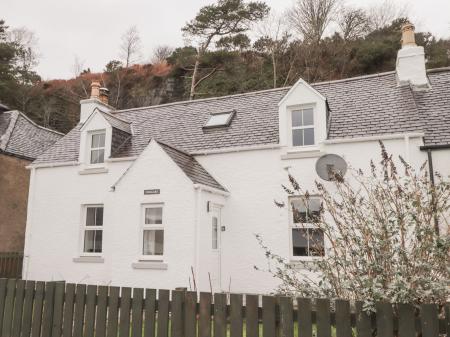
It was originally composed of two villages, Old Aberdeen and New Aberdeen. Despite the names, both areas are equally ancient. Old Aberdeen contains the cathedral and university, while New Aberdeen started as a seaport and fishing village.
History
Aberdeen was granted a royal charter by David I, though the earliest existing charter is that granted by William the Lion in 1179. Another king was not so generous; Edward III burned the city in 1337. The sack was perhaps a blessing in disguise, for the city was rebuilt on a much larger and more imposing scale.
Aberdeen was a major centre of conflict in the mid-17th century; the city was occupied three times by the Earl of Montrose, the first two times as leader of the Covenanters, the final time as a Royalist supporter.
In 1639 Montrose led the Covenanters at the Battle of the Bridge of Dee. The 16th-century bridge, carried on seven graceful, ribbed arches, still stands. Montrose was back at the head of a Royalist army in 1644 when he was victorious at the Battle of the Justice Mills against a mixed army of Covenanters and Aberdeen citizens. After the battle, Montrose let loose his Irish troops on the defeated city. Three days of terrible destruction followed, known as the Sack of Aberdeen.
Major attractions
One of the most popular historic attractions for visitors is Provost Skene's House, a 16th and 17th-century historic house with a wonderful painted ceiling. The Tolbooth Museum houses exhibits on Aberdeen's history in a historic gaol.
In Old Aberdeen is St Machar's Cathedral, with a unique flat, wooden medieval ceiling decorated with heraldic designs. The Aberdeen Maritime Museum traces the development of the harbour and Aberdeen's long history of shipbuilding. The museum is based in a pair of 16th-century townhouses.
On Polmuir Road is Duthie Park and Winter Gardens, 45 acres of parkland set with glasshouses and attractive gardens. On High Street is King's College Chapel, founded in 1495. The chapel boasts beautifully carved medieval furnishings, but it is more famous for its crown spire in Renaissance style.
 We've 'tagged' this attraction information to help you find related historic attractions and learn more about major time periods mentioned.
We've 'tagged' this attraction information to help you find related historic attractions and learn more about major time periods mentioned.




